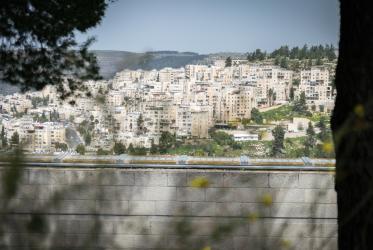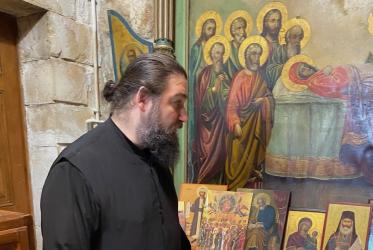Leaders of the Armenian Apostolic Orthodox Church have marked the 99th anniversary of the start of the Armenian Genocide with calls for recognition of that historic event. Beginning in April 1915, more than one million Armenians were killed by troops of the Ottoman Empire, a world power with its capital in what is now the Republic of Turkey.
Karekin II, the Supreme Patriarch and Catholicos of All Armenians, who is also the WCC president for the Oriental Orthodox Churches, and Catholicos Aram I of the Holy See of Cilicia, based in Lebanon, presided at separate anniversary events honouring those who suffered as martyrs.
At a Requiem Mass in Armenia, Karekin II observed that the martyrs’ pain was inflicted deliberately because of who they were, contrary to the position of those who perceive their suffering as an unfortunate side-effect of general suffering during the First World War.
According to online news source Havern Aysor, the patriarch warned that “denial of the truth is a heavy burden not only on the denied, but the denier as well. The truth can be concealed, but never forgotten or lost.”
Earlier in April, at an international conference in Lebanon, Aram I spoke of the need for Armenians throughout the world to observe next year’s 100th anniversary as a united people.
“Unity must become the driving force for all Armenians,” he said. “It’s obvious that Armenia and all Diaspora Armenian communities will hold events according to their region and conditions. But we must take measures to make this a pan-national event”.
Aram I stressed that the goals of remembrance must include both “recognition” of the genocide and “reparation” for losses of the past hundred years.
Last year, on 24 April 2013, Karekin II and Aram I took the unusual step of issuing a joint statement on the Armenian Genocide urging Turkey to return confiscated Armenian churches and church estates. The statement came as an appeal uniting the voices of the two Primates on an issue of great importance to their churches in Armenia and the diaspora.
“In 1915, more than 1.5 million Armenians became victims of genocide. The survivors on the roads of exile found shelter in Eastern Armenia, the present-day Republic of Armenia, Syria, Lebanon and other Arabic nations, and in a number of other countries of the world,” the statement said.
Karekin II and Aram I demanded that the government of Turkey recognize the killing of Armenians as genocide, that the government return all of the confiscated churches, church properties, monasteries and other relics to the Armenian churches, and compensate those Armenians who have suffered because of the genocide.
The Turkish government has never recognized the Armenian Genocide, despite governments around the world, including the EU and United States, recognizing the killings as genocide.
The World Council of Churches (WCC) is planning a major conference on the 100th anniversary of the Armenian Genocide on 24 April 2015. In a Minute passed by the WCC 10th Assembly held in Busan, Korea, 30 October to 8 November, the assembly pledged that the WCC will hold an “an international conference in Geneva on the recognition of and reparation for the Armenian Genocide”.
Both Armenian churches are member churches of the World Council of Churches. Patriarch Karekin II is one of the eight recently elected presidents of the WCC. He was elected by the 10th Assembly as president for the Oriental Orthodox churches of the WCC. Catholicos Aram I is a past, and the longest-serving, moderator of the WCC Central Committee, having served in that office from 1991 to 2006.
Read the joint statement from Karekin II and Aram I
Read the WCC 10th Assembly Minute on the Armenian Genocide
Read about the 24 April statement by Turkish Prime Minister Erdogan
Armenian Apostolic Church (Mother See of Holy Etchmiadzin)






